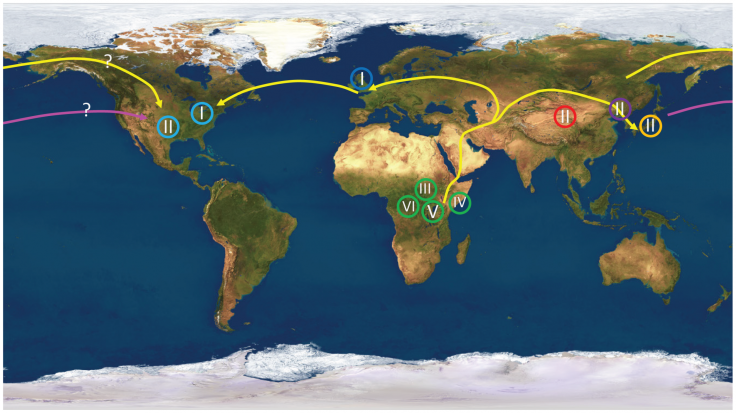Herpes Study Confirms That Human Migration Spread Out From Africa

A new study of the herpes virus has confirmed widely held beliefs about human migration.
The study, published in PLOS One, examined strains of herpes simplex virus type 1 collected throughout North America, Europe, Africa and Asia in order to gain insight on early human migration patterns. After examining the virus’ genome, researchers found ample evidence for the popular “out of Africa” model of human migration, which states that early humans first emerged on the continent before spreading out in disparate groups across the globe.
"The viral strains sort exactly as you would predict based on sequencing of human genomes. We found that all of the African isolates cluster together, all the virus from the Far East, Korea, Japan, China clustered together, all the viruses in Europe and America, with one exception, clustered together," Curtis Brandt, professor of medical microbiology at the University of Wisconsin-Madison and senior author of the study, said in a statement.
"What we found follows exactly what the anthropologists have told us, and the molecular geneticists who have analyzed the human genome have told us, about where humans originated and how they spread across the planet."
Using high-capacity genetic sequencing, University of Wisconsin-Madison scientists were able to develop a “family tree” for the virus, emerging in Africa, bottlenecking in the Middle East and ultimately spreading to Asia, Europe and the Americas.
Researchers say the HSV 1 strain was the perfect virus to work with for numerous reasons. The virus is rarely fatal and sticks with hosts for life, and because it is spread through close contact like kissing, the same strains normally run in families. It is also much smaller and simpler to work with than the full human genome, but still large enough to provide meaningful data.
"You can think of this as a kind of external genome," Brandt said.
Interestingly, the study also offers some evidence for the theory that Native Americans are descended from Asian peoples who crossed a land bridge from far eastern Siberia into the Americas thousands of years ago. Every virus sample collected in the United States matched European strains, except for one Texas-based stain that bore strong resemblances to Asian strains. Brandt says that this is likely due to immigration across a Bering Strait land bridge more than 15,000 years ago.
"We found support for the land bridge hypothesis because the date of divergence from its most recent Asian ancestor was about 15,000 years ago,” Brandt says. "The dates match, so we postulate that this was an Amerindian virus."
© Copyright IBTimes 2024. All rights reserved.






















